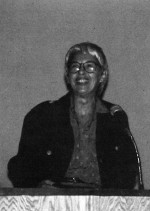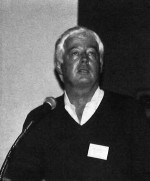The Atmospheric Chemistry Workshop brought 25 participants together to discuss LTER Network needs related to atmospheric chemistry measurements and research. Three objectives offered for discussion were:
- Interest in preparing a summary document that characterizes atmospheric chemistry measurements and background data at LTER sites
- The need for establishing protocols for different levels of Network monitoring relative to ecological processes
- The development of funding and other programs to fill the gaps at sites
Consensus was reached on the following actions:
- Develop a Network document comprised of
- An inventory of atmospheric chemistry measured at each site, method of measurement or collection, number of locations for measurement, duration of record, participation in ongoing networks (NADP, NDDN, Mountain Cloud, etc.)
- Demonstrated illustrations of linkages between atmospheric chemistry and biological/ecological phenomena based on past or current site research (site-specific, summarized examples provided by site investigators), including a list of relevant publications. Wayne Swank will take lead responsibility in collaboration with Bill Munger (Harvard Forest) for compiling and editing the document
- Organize a workshop to synthesize trends, patterns, similarities and differences in atmospheric chemistry across Network sites. This should include wet, particulate, and gaseous atmospheric constituents.
- Organize several working sessions to develop a document which describes standard methods and protocols for atmospheric chemistry across the Network at several different levels of complexity, similar to the climatic measurement protocols. Emphasis should be placed on those parameters considered to be of greatest ecological importance. This document would be of general ecological interest as noted at the Ecological Society of America meeting in Snowbird, Utah. Recommendations could lead to the development of an NSF Network supplemental proposal for atmospheric chemistry equipment and operation.
- Identify Network leadership to establish linkages with other institutions, organizations, and programs conducting near-ground atmospheric chemistry measurements, and to communicate opportunities to sites for followup.

 Enlarge this image
Enlarge this image
